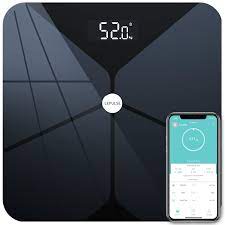Wireless Wellness: Embrace the Benefits of Bluetooth Scales

For many people, wellness is a holistic lifestyle that includes diet, exercise, sleep and mental health. Digital wellness refers to the technology used to support these goals.
Wireless scales can help you track your metrics by synchronizing data over Wi-Fi or Bluetooth. Learn how to choose the best smart scale for you with this helpful guide.
Accuracy
Many smart scales offer a more comprehensive insight into our health than traditional models, sharing metrics like bone mass, muscle mass, body fat percentage and water content. These metrics can be a great motivation to make dietary or fitness changes, and they also help provide context for our overall health.
Most smart scales use bioelectrical impedance analysis (BIA) to estimate body composition. Essentially, the scale sends a painless electrical current through your feet to measure resistance. As the current passes through your limbs, it’s detected by sensors in the base of the scale and used to calculate your measurements.
Generally, the accuracy of these scales exceeds that of traditional models, although they may not be as accurate when it comes to measuring bone density (as seen with the DEXA scans performed in medical settings). Some smart scales with more advanced technology, such as those from Withings and Tanita, feature a handle that contains electrodes to allow for a more individualized measurement.
Convenience
Many smart scales can be used in conjunction with a range of fitness apps. This can help users monitor their weight and other metrics, such as body fat, bone mass, muscle mass and BMI.
Most smart scales use one of two methods to share data with their app: Bluetooth or wi-fi. Scales that use Bluetooth need the user to have their smartphone open and within close proximity in order to successfully log weigh-ins.
This type of wireless technology can be especially useful for research studies that require participants to attend in-person weigh-ins, as it creates a virtual link between coordinators and participants. This can cut down or eliminate the need for in-person visits, and may make it easier for researchers to collect the information they need. This is a significant improvement on current research study technologies that require paper sheets to be manually sent back to the coordinators. This can be a time-consuming and error-prone process.
Syncing
Our phones, cars and speakers are “smart,” so it makes sense that scales are getting a makeover too. Unlike traditional dial or digital scales, smart scales track more than just weight. They measure a variety of dimensions that can be used to assess a person’s health, including muscle mass, bone density and body water percentage.
These scales often connect to a smartphone app via Bluetooth or wi-fi. Wi-fi models are more reliable, as they can connect to a network even when a phone is not nearby.
Some smart scales also offer personalized features, like a pregnancy tracker or endurance training mode. Others can identify multiple users and sync with fitness apps to help people meet their wellness goals. They may also be compatible with Apple Health and Google Fit, as well as other popular scales. This allows people to access their health data on multiple devices without having to manually input it into the scale’s interface.
Apps
Depending on the specific model, some Bluetooth scales can connect to and sync with wellness- and fitness apps (or mHealth apps as they’re sometimes called). These include specialized fitness apps that enable workout tracking, physical or mental exercises, or nutritional management.
These apps can keep a running log of the user’s metrics, including muscle mass, fat mass, bone density, water percentage and BMI. Some can also provide tips and insights to support the user’s health goals.
While the apps offered by these smart scales can be a useful tool for those who want to improve their lifestyle, some may find that they’re a little too complicated to use. This can be especially frustrating if users are sharing the scale with other members of their household. Ideally, these scales should have an easy-to-use app interface that allows for clear instruction and quick setup. This can make the difference between a helpful tool and a dust-collecting annoyance.





